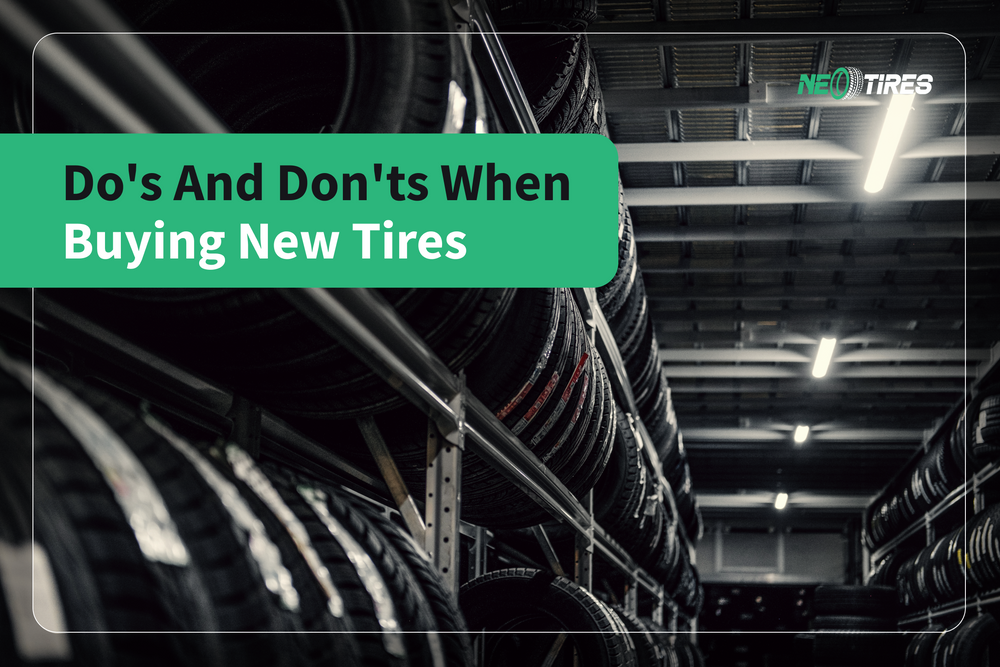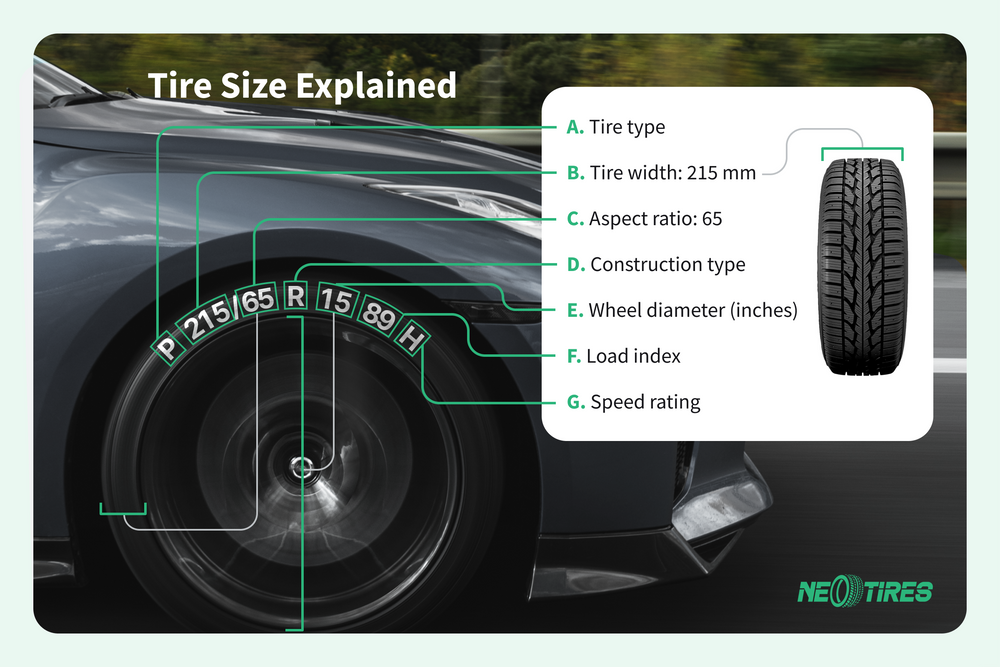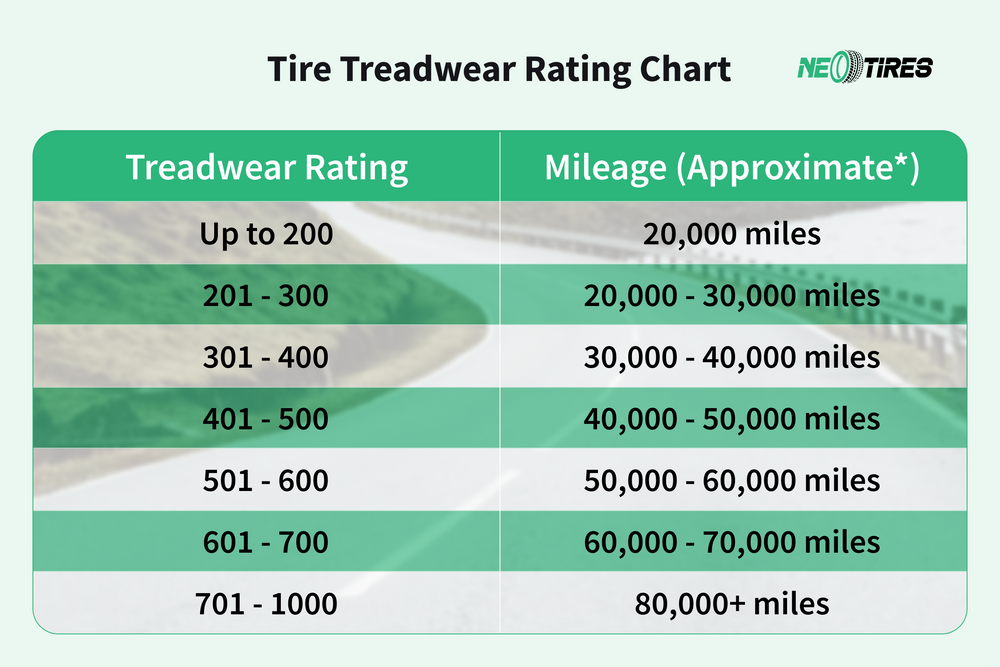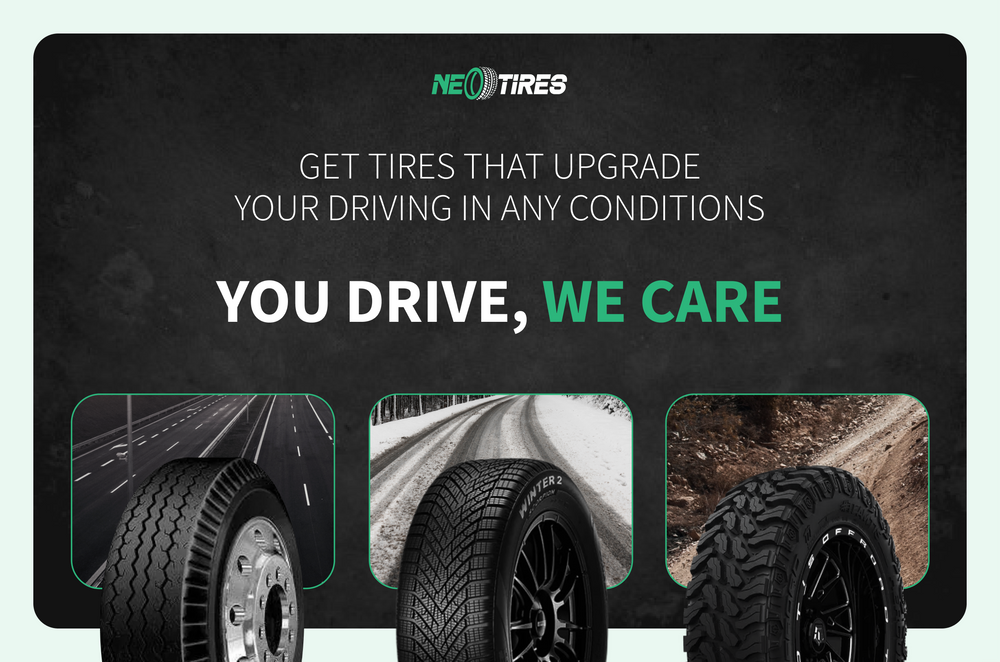Buying new tires is an investment in your driving performance, efficiency, and safety. However, considering the market options and technical details (size, speed rating, load rating, tire type, and driving conditions) can be overwhelming.
Getting new tires requires a good understanding of the driver's specific needs and enough knowledge of the vehicle's specs and tire performance. This post focuses on the key do's and don'ts during the tire buying process to get the most value for the money without compromising performance and safety.
How To Buy New Tires: Do's
First, know when it's time to buy new tires (check tread wear, age, and overall condition). Second, understand the type of tires you need, considering your driving conditions, needs, habits, and budget (consider size, tread pattern, load, and speed index). Third, decide between online vs. physical tire shops (compare prices, availability, and hands-on assistance included if needed). Fourth, consider replacing four instead of 2 tires for safety reasons.
How Do I Know When Tires Need Replacement?
The following five key indicators allow you to consider tire replacement: worn tread depth (Penny test showing less than 2/32 of an inch), cracks and bulges on the sidewall, uneven tread wear, age (6-10 year-old tires need replacement), and performance deficit (long stopping distance, unusual noise, poor handling, bad grip, and traction).
What Tire Size Should I Get?
The size of your new tires should be about the same as your current tires. To find your size, inspect the tire's sidewall to see a sequence of markings like "P215/65R16". These markings specify the tire aspect ratio, rim size, and tire width you should stick to.
Generally, replacement tires should fall within three % of the diameter/height measurement of the existing tires' diameter whenever the existing tires correspond to the manufacturer's recommendations. Consider the manufacturer's guidance whenever planning to upgrade or downgrade tire size.
What Tire Type Should I Get?
Your new tires should correspond to your driving needs, habits, climate, and the road conditions you mostly drive in. Choose all-season tires for versatility for everyday use or winter tires for difficult winter conditions. Consider performance tires for sporty driving and all-terrain or mud tires for challenging off-road conditions.
| Recommended Tires | Driving Habits | Road Conditions | Driving Needs | Key Features |
All-Season Tires | Daily commuting | Mostly dry and wet | Reliable all-year performance | Good grip, versatility, durability |
Performance Tires | Sporty/ high-speed | Smooth highways | Enhanced handling and cornering | Superior grip, braking |
Touring Tires | Long travels | Mixed highway/ rural | Comfort and fuel efficiency | Quiet ride, long tread life, comfort |
Winter/Snow Tires | Winter driving | Snowy, icy, cold | Better traction in freezing conditions | Specialized tread and rubber for snow |
All-Terrain Tires | Off-road driving | Dirt, gravel, and sand | Rugged and reliable in tough terrain | Multi-surface traction, durability |
Mud-Terrain Tires | Extreme off-road | Deep mud, rocky | Maximum grip and resistance | Aggressive tread for extreme conditions |
| LLR Tires | Eco driving | Urban and highway | Minimized fuel consumption | Enhanced fuel efficiency |
| LT Tires | Heavy loads/towing | Paved/unpaved roads | Stronger structure and durability | Reinforced design for heavy-duty use |
Buying Tires Online VS Locally
Consider the pros and cons of both options and decide what is best for you. Buying tires online offers competitive prices, time-sensitive deals, fast shipping to your doorstep, and access to customers' reviews to help you make your decision.
Yet, installation is done separately by the vehicle owner. Local stores typically bundle new tires with immediate installation, hands-on assistance, and loyalty programs for free services. However, tire availability can be lower.
Aspect | Buying Tires Online | Buying in a Local Store |
Pros | Wide selection and competitive prices | Qualified advice from experts |
| Convenient shopping from home | Immediate installation available | |
| Access to reviews and detailed descriptions | Inspect tires before purchase |
Cons | Requires separate installation arrangements | Possible limited inventory |
| Delivery times may delay installation | Typically, higher prices | |
| No hands-on inspection of tires | Limited access to reviews |
How Many Tires Should I Get? 2 Or 4?
Replacing all four tires is the best practice to ensure balanced traction, optimal handling and safety, and uniform tread wear. If buying only two tires, both should go on the rear axle, while the old ones should go to the front, regardless of the vehicle's drive type. Mounting two new tires on the rear prevents fishtailing in wet conditions and provides better overall stability.
What To Avoid When Buying New Tires?
To get the best value for the purchase, four major mistakes should be avoided when buying new tires: disregarding seasonal needs, focusing only on price, overlooking treadwear ratings, and ignoring warranty.
Disregarding Seasonal Needs
The driving environment determines the type of tires you need. For example, summer tires perform poorly in winter conditions, and all-season tires deliver poor traction and grip in off-road conditions. Disregarding seasonal and environmental needs leads to poor performance and unsafe driving conditions.
Focusing Only on Price
Make informed decisions about tire reliability over price so as not to compromise safety, performance, and longevity. Low-price tires often fail to provide adequate traction, especially in demanding conditions, and wear out quickly. Invest in trusted tire manufacturers and balance performance, quality, and price for the best value.
Overlooking Tire Ratings
Ignoring tire ratings (size/treadwear/load and speed ratings) leads to buying the wrong products that do not match the driver's needs and expectations. The driver is likely to get lower treadwear resistance, poorer performance in his driving conditions, lower fuel efficiency, higher heat build-up, and more safety risks than expected.
Overlooking Tire Warranty and Policies
Overlooking policies and warrants when buying new tires can bring about safety concerns and financial loss. Tire warranties usually cover defects, premature wear, roadside assistance, protection from road hazards, or maintenance discounts. Ignoring tire warranties and policies can deprive the vehicle owner of replacement or refund if tires are purchased without coverage.
Buying New Tires: FAQs
At What Point Should You Buy New Tires?
Several factors influence the tire replacement period, such as tire age, tread wear, poor condition, sidewall cracks and bulges, pow traction, and grip.
Is It OK To Buy Just 2 Tires?
Buying two tires is less safe than buying four tires. If buying only two tires, make sure to put them on the rear axle regardless of the vehicle's drive type (FWD, RWD, 4WD, or AWD).
How Much Is A Set Of 4 Brand New Tires?
Tire price depends on the size, type, and brand you choose. A whole new tire replacement is estimated to be between $400-$1000. Dealers' promotions and deals can help find high-quality tires at advantageous prices without compromising quality and performance.
Are Mismatched Tires OK?
No, mismatched tires generate performance conflicts instead of working together for efficient rolling. The vehicle's control becomes poorer, and the steering responsiveness decreases. Also, grip and traction are altered depending on how much the tire type and condition differ.
Get the Right Tires the Right Way!
Buying tires requires knowledge and attention to detail, especially when upgrading for safety, durability, and efficiency.
NeoTires has got the perfect fit for your needs and road conditions. Browse our top-rated tires from trusted brands and equip your vehicle with confidence.
Reach us if you need personalized recommendations. Our trained assistants are just a click away.
Why Trust NeoTires?
Our loyalty and care towards our customers make us different from the competition. So, we are here for any tire-related need. Your satisfaction is important to us, and we want you to return knowing you're cared about here.
We cannot change the conditions under which you drive, but we can definitely find the necessary tires to ride in them, however challenging they may be. Drive safe, and choose your tires wisely!








